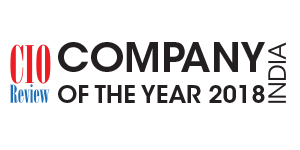
Shelley Saxena, CEO
The current healthcare scenario in India appears to be bleak with the unbalanced ratio of patients to doctors. The Indian Journal of Public Health 2017 edition) reinforces this statement with studies conducted that predict 4.8 practicing doctors per 10,000 population in opposition to the need for one doctor for every 1000 patients as recommended by the World Health Organisation(WHO). India accounts for 70 percent of its population located in rural areas with close to no access to good healthcare services.
In response to these drastic numbers, a low-tech solution in many countries has evolved with the creation of licensed healthcare professionals who are not physicians. These practitioners play a key role in healthcare, especially in remote areas. The availability of quality healthcare is gradually picking pace with the introduction of nextgen technologies such as artificial intelligence(AI) that primarily cater to point-of-care evaluation. Now a nonphysician practitioner equipped with a smartphone application can assist in a diagnostic and screening process of a variety of conditions, and later refer patients to an appropriate physician or request help remotely from a supervising physician. This could possibly be achieved at an economical cost but this whole process is still at a nascent stage in India.
Changing the quality healthcare delivery dynamics, Sevamob headquartered in Lucknow, Uttar Pradesh is one of the only vendors that combine scalable last mile service delivery/ point-of-care evaluation with AI resulting in up to 50 percent reduction in the primary healthcare cost. The company facilitates clients with its robust and innovative AI enabled healthcare platform across India, Southern Africa, and the US. The comprehensive platform encompasses three components that encourage ease-of-use with the first one being artificial intelligence-based triage, consultation and diagnostics for Diet, Vision, Skin, and Blood. This is followed by tele-health infrastructure for remote care via medical professionals and lastly, the company's asset-lite Popup clinics for onsite, in-person care via medical professionals. "Our popup clinics give us easy access to data to train AI models and technology which in turn enables us to secure more contracts at a lower cost. This builds a competitive moat," adds Shelley Saxena, CEO, Sevamob, who has honed his expertise in this domain by effortlessly managing several multi million dollar products for
IBM and co-founded profitable mobile technology startup.
Making Positive Changes in the Healthcare Domain
He goes on to explain how the integration of these three components has been designed with the ability to offer comprehensive primary care at up to 50 percent lower cost. It includes general health, vision, dental, nutrition, cardio-metabolic, infectious disease, cancer, and ENT. This effective model was developed by a team of skilled professionals with a medical and technical skill-set addressing the lack of specialist in remote areas, a complete cost reduction for certain healthcare services. Passionately designed for an increase in convenience, the platform saves lives by providing more care at last mile point-of-care. Notably, close to 80 percent of the consultations conducted are for low income patients where 52 percent include women.
"Sevamob combines scalable last mile service delivery/ point-of-care evaluation with AI resulting in up to 50 percent reduction in the primary healthcare cost"
Additionally, there are large disparities in the nutritional status of patients as well. Deviating from the cookie cutter approach adopted by its competitors of just recommending a diet plan, Sevamob is one of the only tools of its kind that predicts multi-vitamin and mineral deficiencies and recommends a diet, exercise and stress reduction plan.
Meetingand Exceeding Client Expectations
With a huge customer base, Sevamob has worked alongside a broad range of schools, employers, NGOs, hospitals, pharmaceuticals, and government departments. The company is currently conducting an approximate of 15,000 patient consultations per month by leveraging 113 full and part-time units across different geographies. One of the Sevamob's well-renowned customers is Fullerton, having serviced the organization for the last 3 years with comprehensive primary care to micro-finance cells in various states of India. This intervention caused ripples of change with the progress charts projecting improved customer loyalty, reduction of malnutrition by up to 15 percent in select groups, depletion of dental issues by up to 30 percent in certain groups, decrease of vision issues by close to 25 percent in particular groups, lower seasonal and hygiene-related diseases and increased awareness about infectious diseases.
Gearing up for the Journey Ahead
Continually striving to improve healthcare across regions, Sevamob commenced its journey in 2013 as a B2C provider of last mile healthcare in rural areas and finally set its course along developing AI capability to intensify the care delivered at point-of-care and reduce the cost of care. With the aim to continually upgrade its products and services by melding it with trending technologies, the company intends to add support for more medical conditions in each module, add support for urine analysis and obtain FDA approval for some of the modules which fall under Class II devices.
Making Positive Changes in the Healthcare Domain
He goes on to explain how the integration of these three components has been designed with the ability to offer comprehensive primary care at up to 50 percent lower cost. It includes general health, vision, dental, nutrition, cardio-metabolic, infectious disease, cancer, and ENT. This effective model was developed by a team of skilled professionals with a medical and technical skill-set addressing the lack of specialist in remote areas, a complete cost reduction for certain healthcare services. Passionately designed for an increase in convenience, the platform saves lives by providing more care at last mile point-of-care. Notably, close to 80 percent of the consultations conducted are for low income patients where 52 percent include women.
"Sevamob combines scalable last mile service delivery/ point-of-care evaluation with AI resulting in up to 50 percent reduction in the primary healthcare cost"
Additionally, there are large disparities in the nutritional status of patients as well. Deviating from the cookie cutter approach adopted by its competitors of just recommending a diet plan, Sevamob is one of the only tools of its kind that predicts multi-vitamin and mineral deficiencies and recommends a diet, exercise and stress reduction plan.
Meetingand Exceeding Client Expectations
With a huge customer base, Sevamob has worked alongside a broad range of schools, employers, NGOs, hospitals, pharmaceuticals, and government departments. The company is currently conducting an approximate of 15,000 patient consultations per month by leveraging 113 full and part-time units across different geographies. One of the Sevamob's well-renowned customers is Fullerton, having serviced the organization for the last 3 years with comprehensive primary care to micro-finance cells in various states of India. This intervention caused ripples of change with the progress charts projecting improved customer loyalty, reduction of malnutrition by up to 15 percent in select groups, depletion of dental issues by up to 30 percent in certain groups, decrease of vision issues by close to 25 percent in particular groups, lower seasonal and hygiene-related diseases and increased awareness about infectious diseases.
Gearing up for the Journey Ahead
Continually striving to improve healthcare across regions, Sevamob commenced its journey in 2013 as a B2C provider of last mile healthcare in rural areas and finally set its course along developing AI capability to intensify the care delivered at point-of-care and reduce the cost of care. With the aim to continually upgrade its products and services by melding it with trending technologies, the company intends to add support for more medical conditions in each module, add support for urine analysis and obtain FDA approval for some of the modules which fall under Class II devices.







